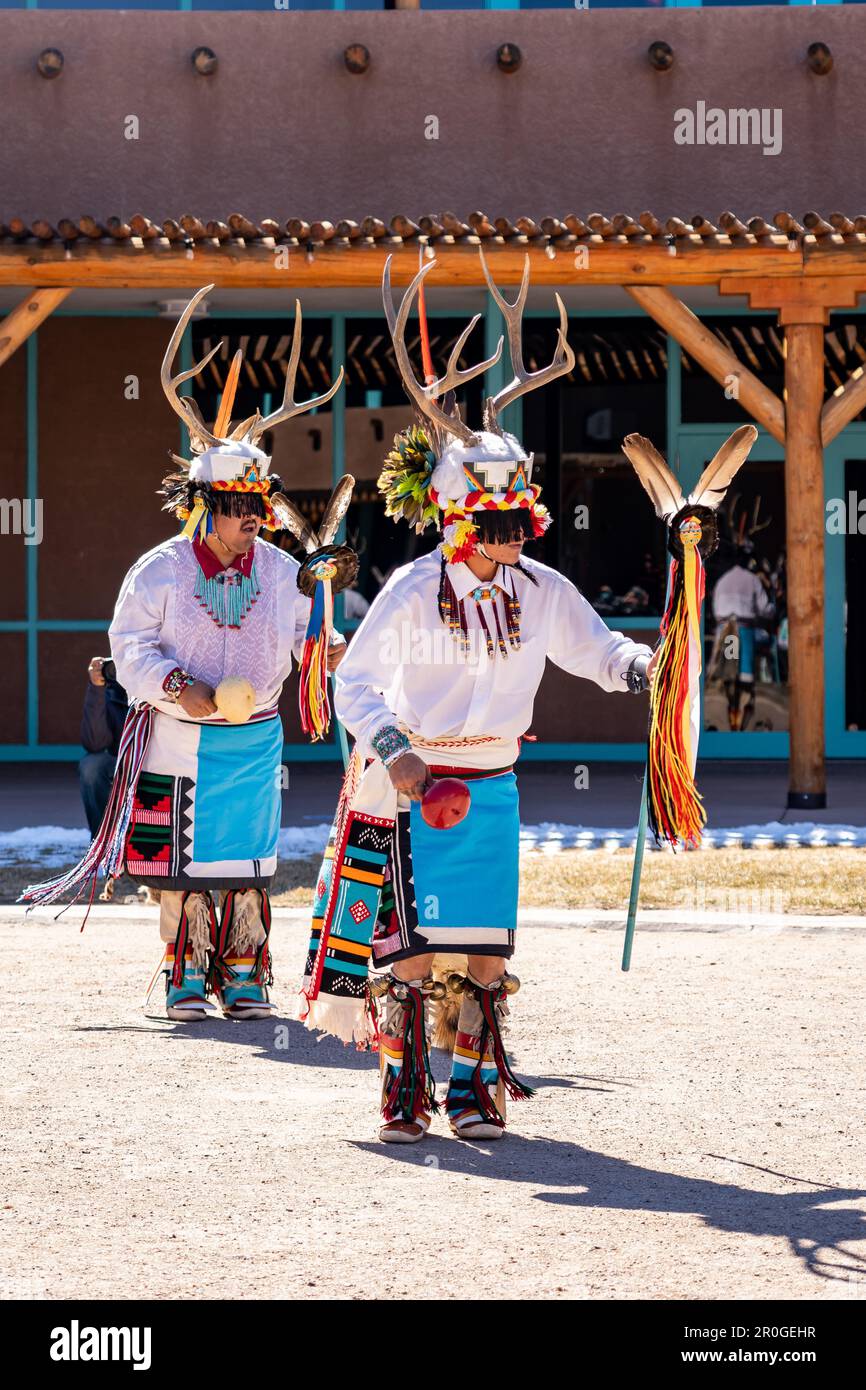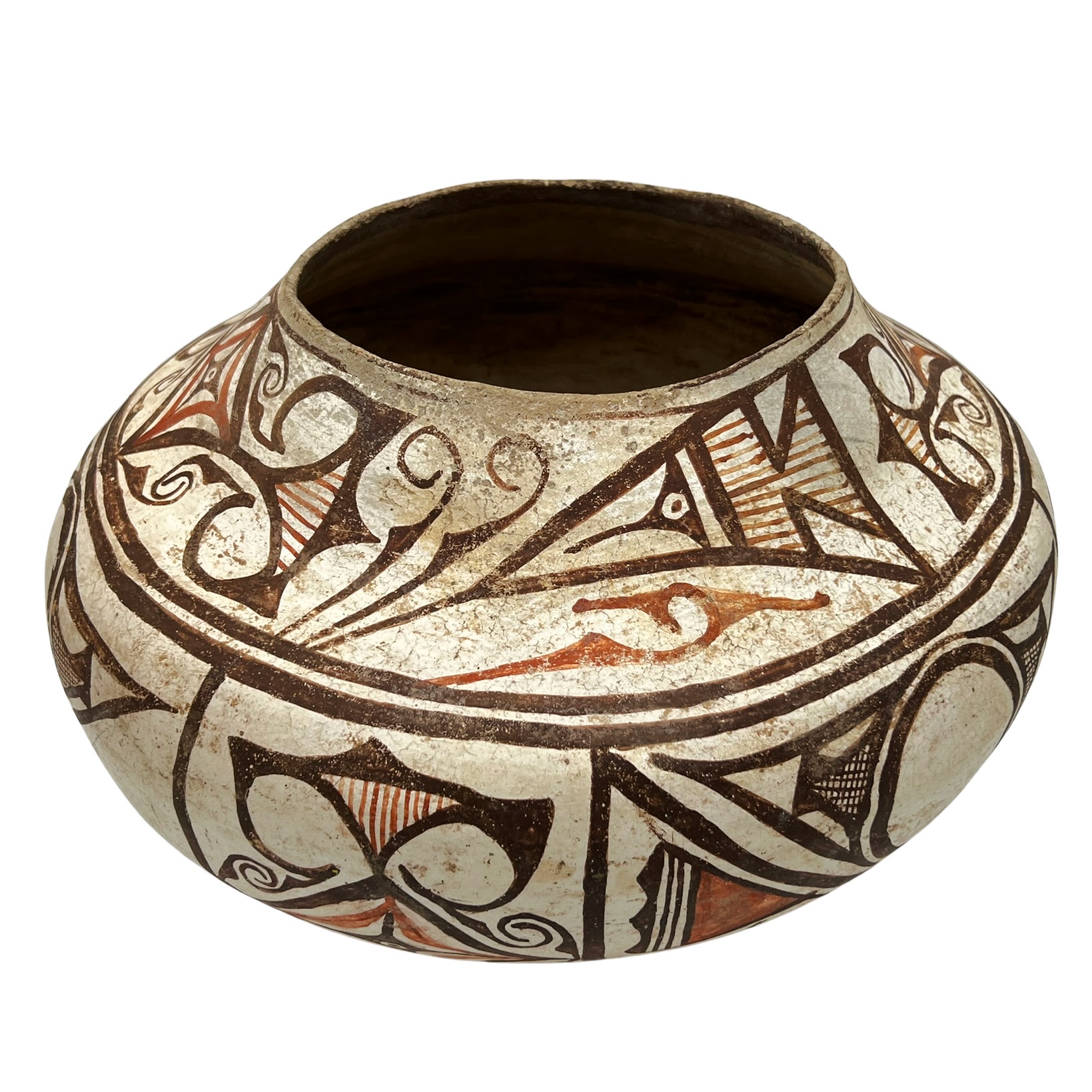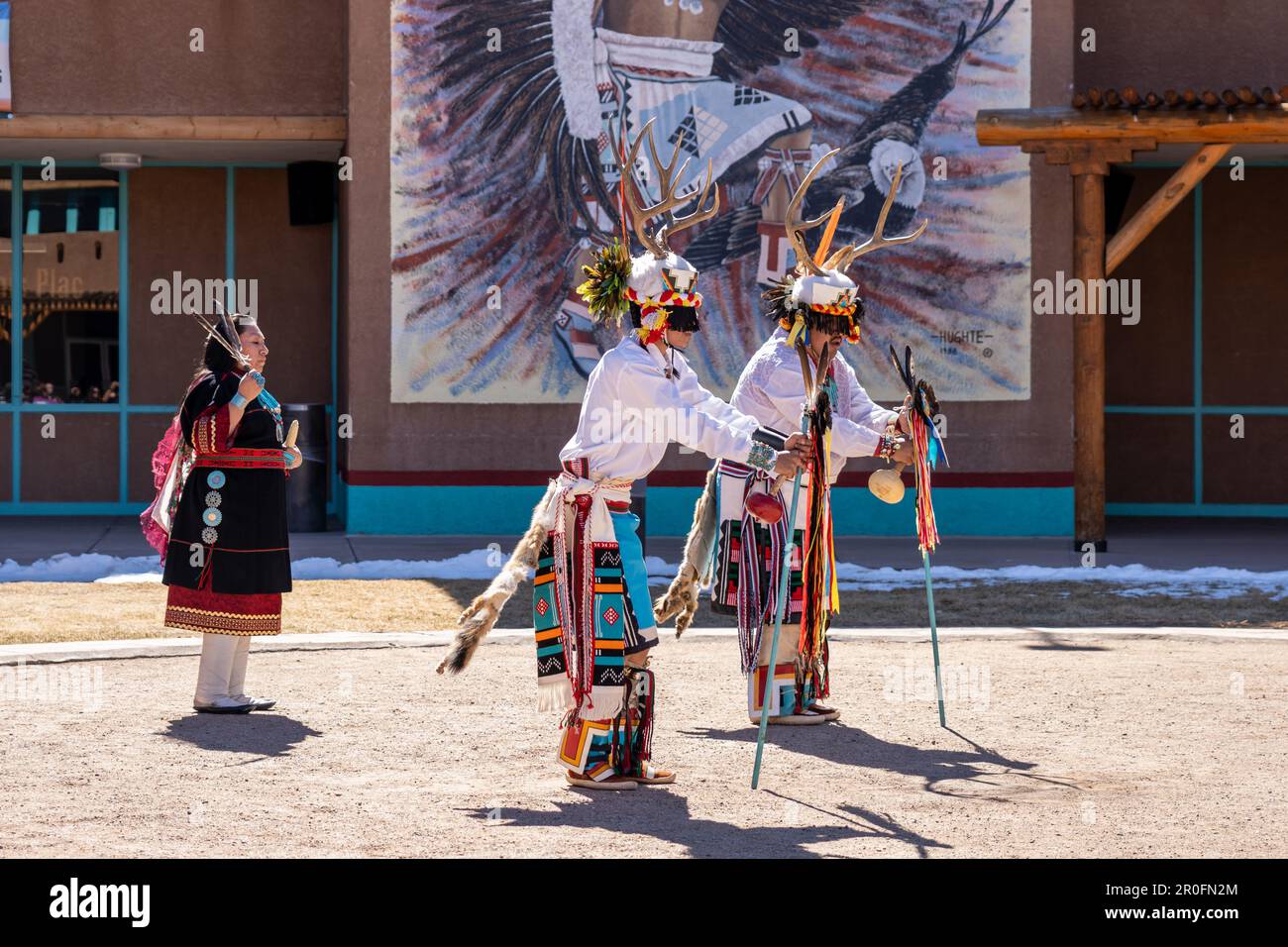
Journey Through Time: Unearthing Zuni Pueblo’s Story Through Its Historical Maps
Imagine a place where the very land breathes history, where every rock, every river bend, and every ancient trail holds a story stretching back not just centuries, but millennia. Now, imagine unlocking those stories not just through archaeological finds or oral traditions, but through the profound and often overlooked lens of historical maps. This is the journey we embark on when we explore Zuni Pueblo, New Mexico, through the prism of its cartographic legacy. Far from being mere geographical representations, Zuni Pueblo’s historical maps – in their myriad forms – are living documents, cultural artifacts, and crucial keys to understanding one of North America’s most enduring and vibrant indigenous communities.
This isn’t just a trip to a museum to view old parchments. It’s an immersive exploration of how different ways of seeing and mapping the world have converged, collided, and ultimately coexisted on this ancient landscape. It’s about recognizing that "maps" extend beyond the European tradition of lines on paper, encompassing oral histories, sacred geographies, and the very act of living on and stewarding the land. For the discerning traveler and history enthusiast, understanding Zuni through its maps offers an unparalleled depth of insight, revealing layers of resilience, adaptation, and profound cultural continuity.
The Land as the First Map: Indigenous Cartographies

Before any quill touched parchment, the Zuni people, or A:shiwi, possessed an intricate and sophisticated understanding of their world – a living map woven into their memory, traditions, and daily lives. This indigenous cartography wasn’t static; it was dynamic, passed down through generations via storytelling, ceremony, and direct experience. Their maps were not about fixed boundaries but about relationships: relationships to sacred sites, to resource-gathering areas, to ancestral pilgrimage routes, and to the cosmos itself.
Imagine elders recounting migration stories, tracing paths across the landscape with their hands, describing landmarks that held spiritual significance, water sources vital for survival, and fertile fields for sustenance. These were mental maps, mnemonic devices, guiding the community through an ever-changing environment. Petroglyphs etched into rock faces served as permanent markers, depicting astronomical observations, clan symbols, and important events, acting as visual footnotes to their grand narrative. The Zuni worldview saw the land itself as a sacred entity, a complete, self-regulating system, and their "maps" reflected this holistic understanding, emphasizing interconnectedness rather than mere physical location. To truly appreciate Zuni historical maps, one must first acknowledge and respect this foundational, deep-rooted indigenous perspective.
The Arrival of the Others: Spanish Expeditions and Shifting Perspectives
The 16th century brought a dramatic shift in how Zuni lands were perceived and mapped. The arrival of Spanish conquistadors, most notably Francisco Vázquez de Coronado in 1540, marked the beginning of European cartographic engagement with the region. Driven by rumors of the fabled "Seven Cities of Cíbola" – cities of gold – Coronado’s expedition, guided by indigenous informants (often under duress), sought to locate these mythical places. Zuni Pueblo, then known as Hawikku, was the first and largest of the A:shiwi settlements encountered.

The maps produced by these early Spanish expeditions were rudimentary by modern standards, often based on verbal descriptions, rough sketches, and a European desire to project their own understanding of territory onto an unfamiliar landscape. They were maps of conquest, focused on identifying potential resources, strategic points, and routes for further exploration and conversion. They often distorted distances, misidentified features, and applied European names to ancient Zuni places, reflecting a gaze more interested in possession than understanding.
For the Zuni, these Spanish maps represented an alien concept: the demarcation of land as property, separate from its spiritual and communal meaning. The maps of Coronado and later explorers like Juan de Oñate (who established the first Spanish colony in New Mexico in 1598) are invaluable historical documents, offering a glimpse into the initial European perception of the Southwest. But more importantly, they highlight the stark contrast between two fundamentally different approaches to defining and relating to the land. They are maps of encounter, often of misunderstanding, and occasionally, of conflict.
The American Expansion: Surveyors, Ethnographers, and the Reservation Era
Centuries later, the 19th century ushered in another wave of cartographic activity as the United States expanded westward. This era saw the introduction of more precise surveying techniques, driven by military expeditions, railroad expansion, and the establishment of new territories. Maps from this period were often scientific in their intent, aiming to accurately chart topography, identify natural resources, and delineate political boundaries.

However, these maps also served a more insidious purpose: the legal justification for land appropriation and the creation of reservations. As the U.S. government asserted control, maps became tools for defining and shrinking indigenous territories, confining communities like Zuni to ever-smaller parcels of their ancestral lands. The Zuni Reservation, established in the late 19th century, was a product of this mapping, a stark contrast to the vast, interconnected territories the A:shiwi had traditionally utilized.
Yet, this era also brought a different kind of mapping: ethnographic studies. Pioneering anthropologists like Frank Hamilton Cushing, who lived among the Zuni in the late 19th century, and Matilda Coxe Stevenson, meticulously documented Zuni culture, language, and spiritual practices. While their work was often framed within the scientific paradigms of the time, it inadvertently captured elements of Zuni’s indigenous cartography. Their notes, sketches, and descriptions of sacred sites, clan territories, and ceremonial routes, though interpreted through a Western lens, preserved fragments of Zuni’s own understanding of their world. These ethnographic maps, though sometimes problematic in their methodology, offer valuable insights into Zuni life during a period of immense change, providing a bridge between the purely geographical and the deeply cultural.
Zuni Reclaims the Map: Self-Determination and Cultural Mapping
Fast forward to the late 20th and 21st centuries, and we witness a powerful reversal: the Zuni people actively reclaiming and redefining their maps. This contemporary movement is driven by self-determination, cultural preservation, and the assertion of sovereignty. Utilizing modern technologies like Geographic Information Systems (GIS), the Zuni are creating their own maps – maps that reflect their perspectives, priorities, and traditional knowledge.
These modern Zuni maps are not just about land management for economic development; they are vital tools for cultural continuity. They meticulously document ancestral sites, traditional plant gathering areas, historical trails, and sacred geographies, often incorporating oral histories and community input. They are used for land claims, protecting sacred sites from desecration, managing natural resources in a culturally appropriate way, and educating younger generations about their heritage.
The A:shiwi A:wan Museum and Heritage Center in Zuni Pueblo plays a pivotal role in this process. It’s not just a repository of artifacts; it’s a living institution dedicated to preserving and revitalizing Zuni culture. Here, you might encounter exhibits that showcase traditional Zuni maps alongside historical European ones, illustrating the contrasting worldviews and the journey of the Zuni people. It’s a place where the community actively engages with its history, and where visitors can respectfully learn about the ongoing efforts to map and protect Zuni cultural landscapes.

Experiencing Zuni Through Its Maps: A Traveler’s Perspective
For the thoughtful traveler, engaging with Zuni Pueblo’s historical maps transforms a simple visit into a profound educational experience. It encourages a deeper understanding of the land and its people, moving beyond superficial tourism.
Upon arriving at Zuni, the first thing that strikes you is the enduring presence of the Pueblo itself – a cluster of multi-story adobe homes that have stood for centuries. Here, the landscape is the map. The Zuni River, flowing nearby, has been a lifeblood for millennia, its course etched into the community’s history. The surrounding mesas, visible from the Pueblo, are not just geological features; they are ancestral homes, ceremonial sites, and sources of vital resources, each with its own name and story on the Zuni’s internal map.
A visit to the A:shiwi A:wan Museum and Heritage Center is an absolute must. Here, you can delve into the physical evidence of these maps. You might see reproductions of early Spanish maps attempting to locate Cíbola, side-by-side with intricate Zuni ethnographic maps created by later anthropologists. Crucially, you’ll also encounter contemporary Zuni-led mapping projects, showcasing how the community is using modern tools to assert its narrative and protect its heritage. The museum provides context, explains the significance of various sites, and offers insights into Zuni language and culture – all of which are essential for interpreting the "maps" of the Zuni world.
While direct access to all sacred sites is restricted (and rightfully so, to protect their sanctity), understanding their locations on historical maps – both indigenous and European – allows for a contemplative appreciation of Zuni’s spiritual geography. Imagine tracing the path of Coronado’s expedition on an old Spanish map, then overlaying it with Zuni oral traditions about those same places, recognizing the points of intersection and divergence. This exercise in comparative cartography is incredibly illuminating.
Always remember that Zuni Pueblo is a living, breathing community, not a theme park. Respectful engagement is paramount. Visitors should adhere to all guidelines, including photography restrictions, and be mindful of the privacy and sacredness of the community. Engaging with local Zuni artists and craftspeople, whose designs often carry deep historical and cultural meaning, is another way to connect with the living traditions that these maps represent.
The Enduring Power of Maps
The historical maps of Zuni Pueblo are more than just guides to physical locations; they are powerful narratives of cultural resilience, spiritual connection, and an ongoing struggle for self-determination. From the intricate mental maps passed down through generations of A:shiwi storytellers to the crude sketches of Spanish conquistadors, the precise surveys of American expansionists, and the sophisticated GIS projects of today’s Zuni nation, these maps collectively tell a complex, multi-layered story.
They remind us that history is not a singular narrative but a confluence of perspectives. They challenge us to look beyond the lines on a page and understand the worldviews they represent. For the Zuni people, these maps – in all their forms – are a testament to their enduring presence, their deep connection to their ancestral lands, and their unwavering commitment to preserving their unique cultural identity.
To travel to Zuni Pueblo with an understanding of its cartographic history is to undertake a profound journey. It’s to walk on land that has been mapped, re-mapped, and re-claimed countless times, each iteration adding another layer to its rich and compelling story. It’s an invitation to see the world not just as a collection of places, but as a living, breathing tapestry of interconnected histories, cultures, and enduring human spirit.
